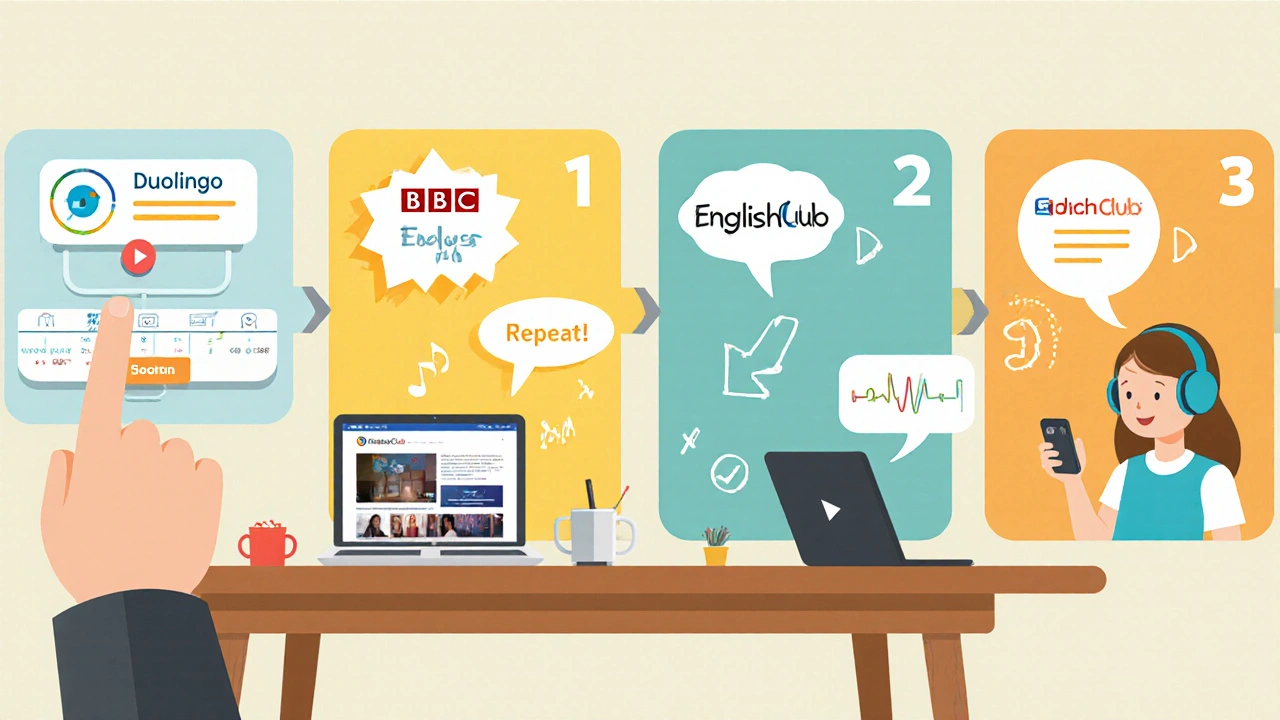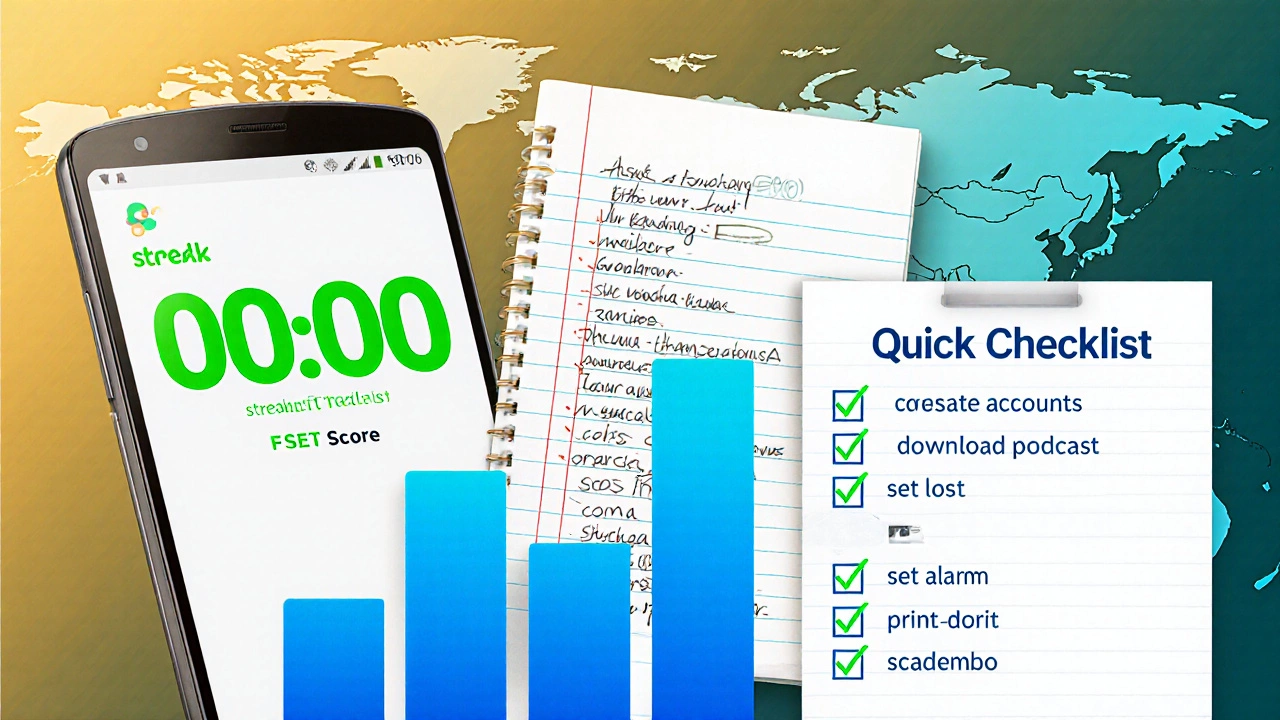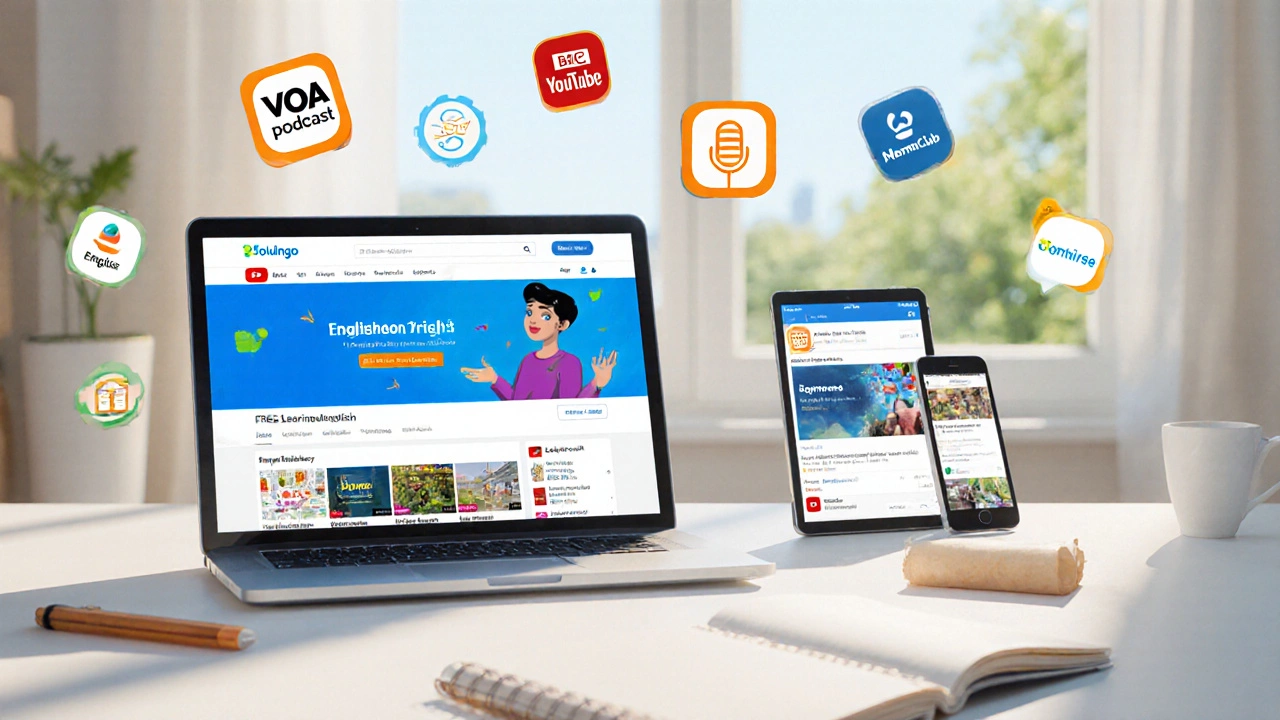Daily English Practice Planner
Your Daily English Practice Plan
Follow the article's recommended routine to make the most of your 20-30 minutes daily.
When you want to basic English the foundational skills for everyday conversation, reading simple texts, and writing short messages, you don’t need to spend a fortune. Hundreds of free tools are available online, and most of them are designed for absolute beginners. Below you’ll find a step‑by‑step plan that turns those tools into a clear learning path, plus a quick‑look comparison of the most popular free resources.
Pick the Right Free Resources
Not every free website or app works the same way. Some focus on vocabulary, others on listening, and a few cover all skills at once. Here’s a handy snapshot of the top free options as of 2025.
| Resource | Platform | Primary Focus | Key Strength |
|---|---|---|---|
| Duolingo | Web, iOS, Android | Vocabulary & Grammar | Gamified lessons keep you coming back daily |
| BBC Learning English | Web, YouTube | Listening & Pronunciation | Authentic British accents and news‑based topics |
| VOA Learning English | Web, Podcast | Listening & Reading | Slow‑spoken American English with transcripts |
| Memrise | Web, iOS, Android | Vocabulary | Mnemonic videos make tricky words stick |
| YouTube (EnglishClass101) | YouTube | Speaking & Listening | Short, real‑life dialogues with subtitles |
| EnglishClub | Web | Grammar & Community Practice | Free worksheets and a friendly forum |
Pick two or three that match your learning style. For most beginners, a combo of Duolingo (structured practice), BBC Learning English (listening), and EnglishClub (grammar questions) gives a balanced exposure.
Build a Simple Daily Routine
Consistency beats intensity when you’re starting from scratch. Aim for 20‑30 minutes a day, split into bite‑size blocks. Here’s a flexible template you can tweak:
- Warm‑up (5min): Open Duolingo and finish one lesson. This wakes up your brain and reinforces core vocab.
- Listening (10min): Watch a short BBC Learning English video or listen to a VOA podcast episode. Pause after each sentence, repeat aloud, and jot down new words.
- Grammar focus (5min): Use EnglishClub’s “Daily Grammar” page. Do the quick quiz and note any patterns you missed.
- Speaking practice (5min): Record yourself summarizing the video in your own words. Play it back to catch pronunciation gaps.
The routine feels short, but over a month you’ll have completed 30‑40 Duolingo lessons, 30 listening episodes, and dozens of grammar drills-all without spending a penny.

Boost Listening and Speaking for Real‑World Confidence
Listening comprehension often lags behind reading, because you’re processing a fast‑moving audio stream. Two tricks can level the playing field.
- Slow‑down mode: Both YouTube and most podcast apps let you reduce playback speed to 0.75×. Start slow, then gradually speed up as you get comfortable.
- Shadowing: Choose a 30‑second clip, play it, then immediately repeat each phrase trying to match rhythm and intonation. It’s the secret behind many accent‑reduction courses, and you can do it with any free video.
When you feel ready, join a language‑exchange community like Tandem (free tier). A 15‑minute chat with a native speaker each week turns passive listening into active conversation.
Practice Reading and Writing Without a Textbook
Reading simple news, children’s stories, or even subtitles can sharpen vocabulary. Start with the “Easy English” section on the News in Levels website - articles are graded into three difficulty levels, and each comes with a list of new words.
For writing, keep a micro‑journal. Spend five minutes each night writing three sentences about your day. Use the free Grammarly browser extension (basic version) to catch obvious errors, then rewrite the sentence yourself.

Track Progress and Stay Motivated
Seeing improvement fuels motivation. Here are three low‑tech ways to measure growth.
- Streak counter: Duolingo shows a daily streak; aim to keep it alive for at least 30days.
- Vocabulary notebook: Write down new words, their definitions, and a sample sentence. Review the list weekly; you’ll notice many words become “known” after just two cycles.
- Self‑assessment test: Every two weeks, take the free placement test on EF SET. Record your score and watch it climb.
If you hit a plateau, switch up the resource: move from Duolingo to Memrise for a fresh set of mnemonic videos, or replace BBC Learning English with a different accent like Australian English on the ABC Learning English channel.
Quick Checklist to Get Started Today
- Create free accounts on Duolingo, BBC Learning English, and EnglishClub.
- Download a podcast app and subscribe to VOA Learning English.
- Set a daily 20‑minute alarm titled “English practice”.
- Print a simple notebook for vocab and daily journal.
- Bookmark the comparison table above for quick reference.
Follow the checklist, stick to the routine, and you’ll be able to hold short conversations, understand basic news, and write simple messages within a few weeks - all for free.
Frequently Asked Questions
Do I need an internet connection to use these resources?
Most of the listed tools work online, but many let you download lessons for offline use. Duolingo and Memrise both have offline modes, and you can save podcast episodes to listen later without data.
How long will it take to reach a conversational level?
If you study 20‑30 minutes daily and use the routine above, most learners reach A2‑B1 (basic conversation) in 8‑12 weeks. Progress varies, but consistency is the biggest factor.
Can I practice speaking without a partner?
Yes. Shadowing videos, recording yourself, and using speech‑recognition features in apps like Duolingo give you immediate feedback. When you’re ready, language‑exchange apps provide free native speakers.
Are there any hidden costs?
All core features mentioned are free. Some platforms offer premium upgrades (e.g., ad‑free Duolingo) but they aren’t required for solid progress.
What if I already know some English words?
Use the placement tests on Duolingo or EF SET to set your starting level. Then skip beginner lessons and focus on gaps, such as grammar or listening, using the same free resources.
